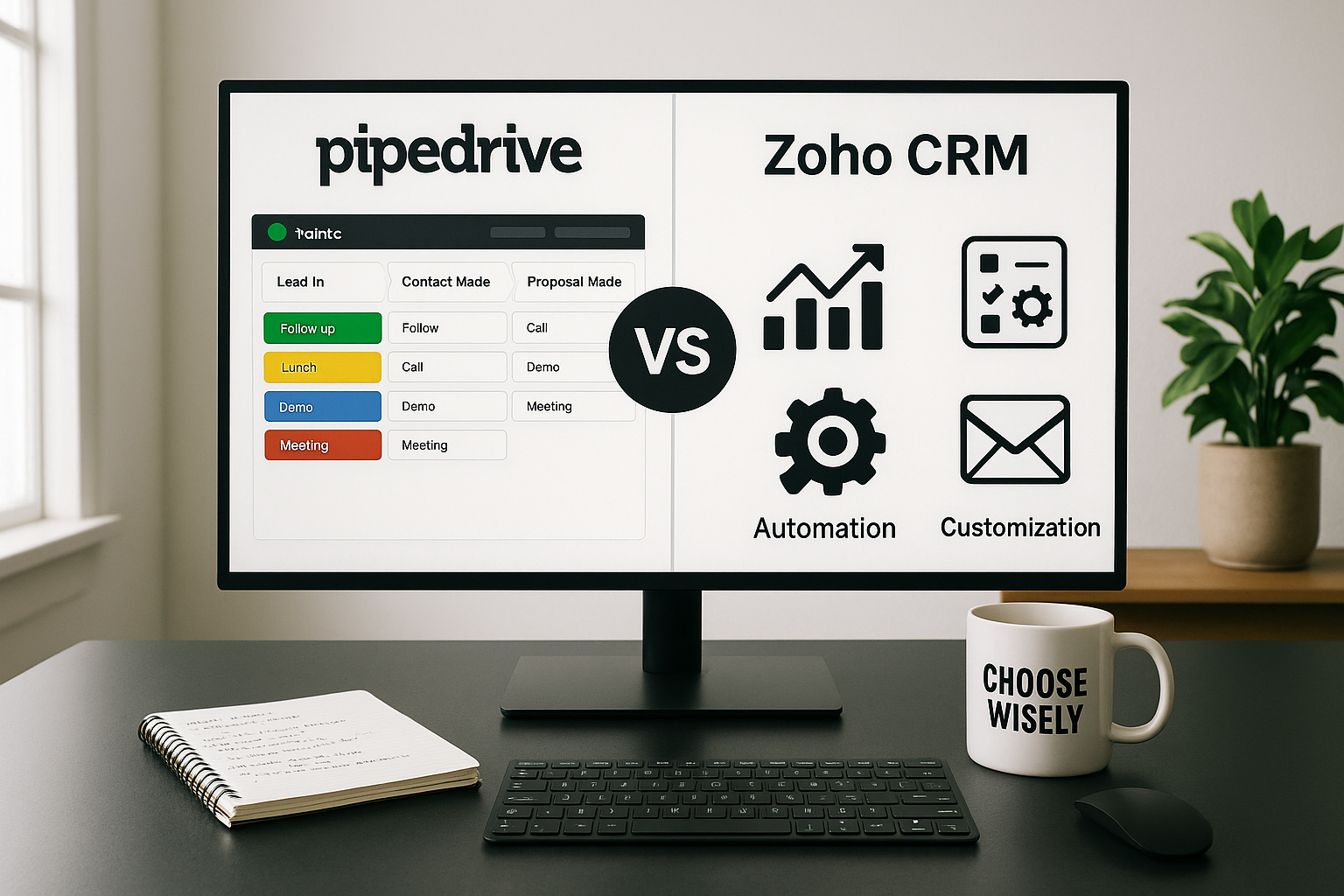They say that success has many fathers, failure is an orphan, so is the choice of CRM platform determines what you will achieve. Mostly, in the CRM evaluation, business owners look at two possibilities:
- to improve the customer relationships,
and - generate higher revenue.
Thus, the companies decided to migrate their current CRM know that the platform is far from a mere piece of software, but rather a partner in the conquering of the business world.
Once you are facing the need in selecting a new solution, it is advised to start with defining your team requirements and pain points, then go down to figuring out what outcomes you’d like to achieve, and only then create a set of CRM evaluation methods.
Inside Interview Before Evaluating CRM
Even with the analytical mindset, we require tools to wade through increasing amount of data available. In case of business processes, there is an urgent need in automation and facilitation of workflows. And when it comes to the choice of implementing or switching to another CRM platform, general company goals may vary from the objectives set for the departments.
Instead of digging deeper into the endless reviews of platforms, you can interview teams that actually deal with challenges in their work or struggling with the currently used CRM. Each of your staff has a story to tell.
Listen to Sales Reps
Being the primary users of CRM, the sales department is eager to get a full visibility of data as they want to enhance the managing and scoring of leads and contacts. Additionally, the sales people focus on the reports of the efficiency of their opportunities and customer preferences. To reach their critical goal – drive revenue – you should ask sales reps a couple of questions:
- How much time do you spend actually selling? Tell about your average day.
- Can you access data or tools used applied daily outside the office?
- Do company tools help to understand the customer and deliver the expected service?
- Does existing CRM facilitate the process of data gathering, deliver social insight, and make every conversation with customer valuable and productive?
- How do you manage to track the interactions with customers and partners?
Marketing Team Pains
Over and over again, marketing proves its strategic value for business development. As the crew closely collaborates with sales reps, they play a critical role in evaluating CRM. Marketing people help to define the metrics and engage targeted customers via multiple channels to deliver the higher ROI level. With CRM platform, they can build continually added pipeline of qualified leads. So, ask your marketing managers the following set of questions:
- Does our CRM provide the extensive analytics that delivers data to analyze brand perception?
- Does our CRM enforce the personalized interaction with every customer?
- How do we run marketing campaigns?
- How do we monitor the feedback and incentive our brand has in social media?
- How do we calculate ROI of spent marketing dollars?
Support Your Service Crew
The service and help desk reps are expecting to provide the quick and accurate answers to customers via all interaction channels supported by the company. On the technical side, they require fast and quality solutions as it opens more cross-selling and upselling possibilities. Targeting for the customer loyalty increase, you can ask service reps:
- How do our customers interact with us? What channels do they use?
- How do we handle the customer support via multiple interaction channels?
- Does our CRM solution enable reps to cross-sell and upsell?
- How does the system help to collaborate across the company?
- Does CRM enable the flexibility in the processes and facilitate the workflow?

Define Business Goals to Achieve
To drive sales of the current line and extend the business capabilities, you need to advance CRM strategy and apply it to the objectives. Generally, there are three crucial goals companies share:
#1 Reduce the operation cost
#2 Track and boost the efficiency
#3 Develop stronger customer relationships
With the expense of departments needs, you should add specific objectives that will be galvanized into action with a new platform. So, accommodate all the objectives to the checklist of CRM evaluation method.
Measuring Stick for CRM Vendors
It doesn’t take a rocket science, all CRM platforms are different and offer varying features and tools. Although, you have to define a scale according to which you will evaluate CRM vendors. The choice of solution can become a game-changing moment and in order to make a valuable match to your goals, you use the following score parameters:
0 – CRM doesn’t suite
1 – CRM falls behind business goals
2 – CRM may meet some of needs
3 – CRM complies with requirements
4 – CRM offers too elaborated capabilities
Definitely, you can add few more scoring parameters, but beware to overcomplicate the scoring grade.

9 CRM Evaluation Criteria to Find Your Match
Once you decided to change the CRM and up to this moment, the list of possible options has been fully completed. When the hunting for new software started, draw up a table with the CRM vendors and the below evaluation criteria, and then put the scores.
You also can check 5 Steps of Effective CRM Implementation Strategy
Annual Expenses
This is one of the leading values that has a direct influence on the ROI of this initiative. Make sure you defined the exact number of users who will use the CRM and calculated the expenses. In case the costs are going far beyond the budget you can afford, consider other CRM vendor.
Timing the Implementation
Pay attention to this tricky aspect because the implementation of the CRM may require third-party help. That’s why contact with the vendor and figure out the approximate time of this process, and include the office policies, busy seasons, etc. The job is done only when the team actually uses the new CRM.
User Adoption Process
In CRM evaluation give a major role to the user adoption, the new CRM should minimize the complexity and iterate the processes on all levels.
Accessibility and Mobility
The fast-paced business world demands the quick actions and solutions. So, the mobility and accessibility on-the-go join the list of must-have CRM options.
Integration Capabilities
When building a business, companies use far more solutions that a mere CRM platform. In this way, make sure that your new CRM enables the integration options with other services you have already successfully apply (i.e. email, document storage, marketing automation, business intelligence, call tracking, survey tools, etc.)
Workflow and Insights
To change your problem-causing experience, select the CRM vendor that provides the visibility of the processes, sales funnel analysis, forecasting capabilities, deal volume and won reports.
Scalability Question
Apart from robust decision-making, don’t forget about evaluating CRM from the strategic and goal-oriented approach. Check out the scalability of each option in accordance to
- Permissions setting if the team will grow
- Geolocation for visualizing the position of the customers to deliver the timely offers
- Cost of growth – figure out how the platform may scale as your company evolves.
- Customization Aptitude
Anticipating the change, discover what customization possibilities you will gain with the evaluated CRMs. These requirements are quite specific, but there are also a set of common areas that need customization: sales funnel stages, records filtering and data sorting options, and the like.
After-sales Support
Since learning is a high-energy process, people prefer to see information in small pieces even if it takes more clicks to get it. Maximize the success by enabling your team with proper tutorials, so involve into CRM evaluation the point to check: references for users, online support, tutorials and helpful guides.
Takeaway
The CRM evaluation and selection of a new vendor become a pressing problem, thus if you want to see sales climbing, you need to spend a reasonable amount of time to explore the options and choose an ideal CRM match.
With the correct customer data management tools and strategy, even if your data is a mess, putting it in order is possible — and easier than you might think. For more information see the article Top 5 Recommendations How to Manage Customer Data


(2).jpg)


